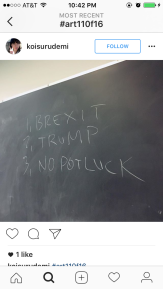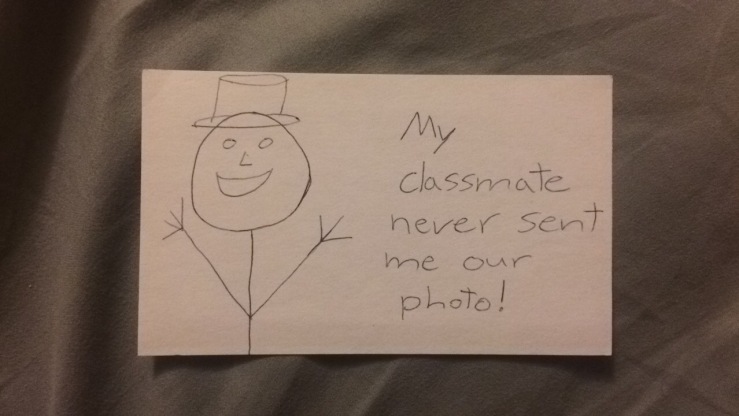
Our final activity! For Week 15, finger painting was the final art experience. I will be honest, some of these activities were very fun and I will miss taking this class next semester. I even ended up enjoying drawing Batman every week for my ID card.
The finger painting was pretty quick in execution, but very fun and reminded me of kindergarten. It was actually very relaxing, especially right now, the weekend before finals week. The paint slowly dried around my fingers, creating a brittle crust that was slightly difficult to wash off later on. It reminded me of the single sink that existed in a classroom where I would run a daycare for PTA meetings. The sink always smelled like washable paint, even when nothing resembling paint had touched it in days. Being a college student, finger painting is not a normal activity, and it brought me back to a time when things were much simpler. It was actually harder than I thought it would be, as the paint didn’t slide off of my hands so easily. Adding to the difficulty of this, abstract format made it harder to begin. Eventually, just by pressing my hand onto the board, small movement turned into larger ones which ended up being really fun. Compared to the graffiti activity, this feels like it comes with a whole other set of connotations. They’re both expressions through paint, although graffiti seems more mature than finger painting, even though finger painting was probably one of the first art forms to ever be invented. I’ll certainly be keeping this painting.





















